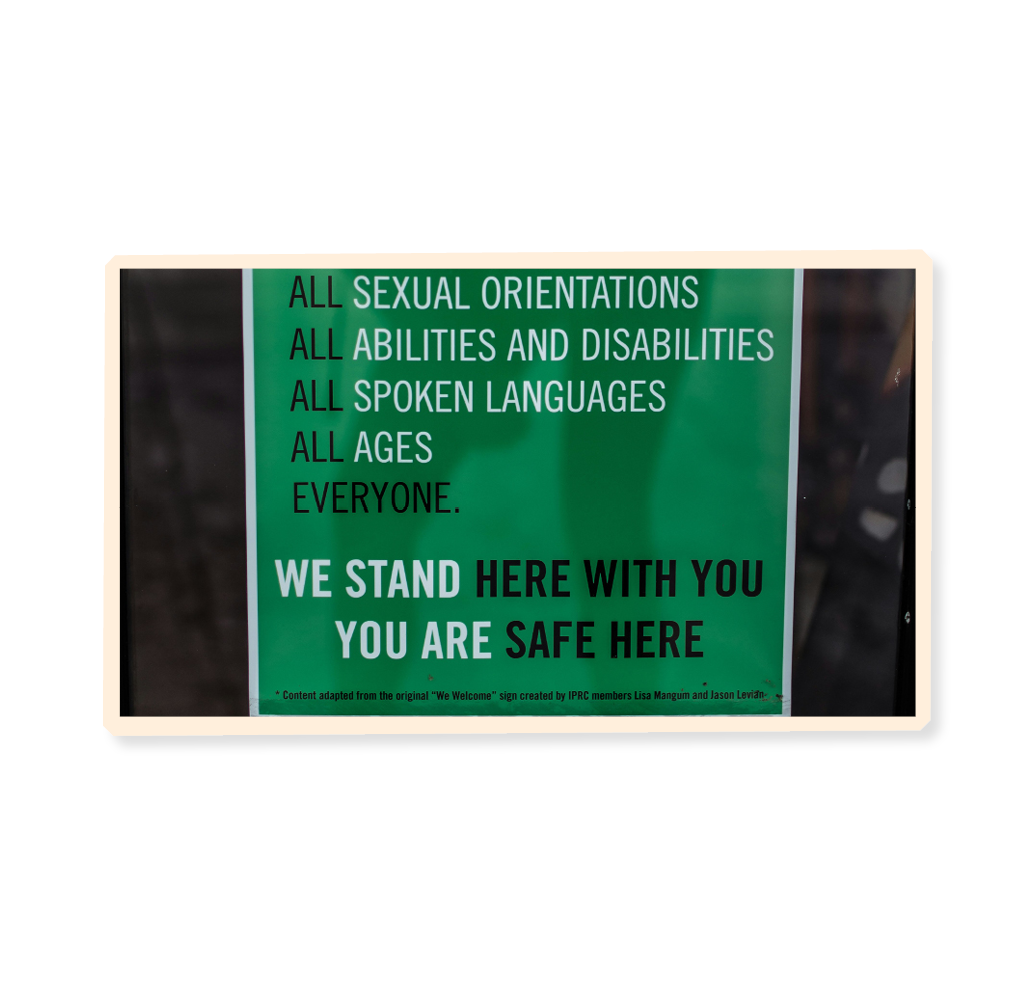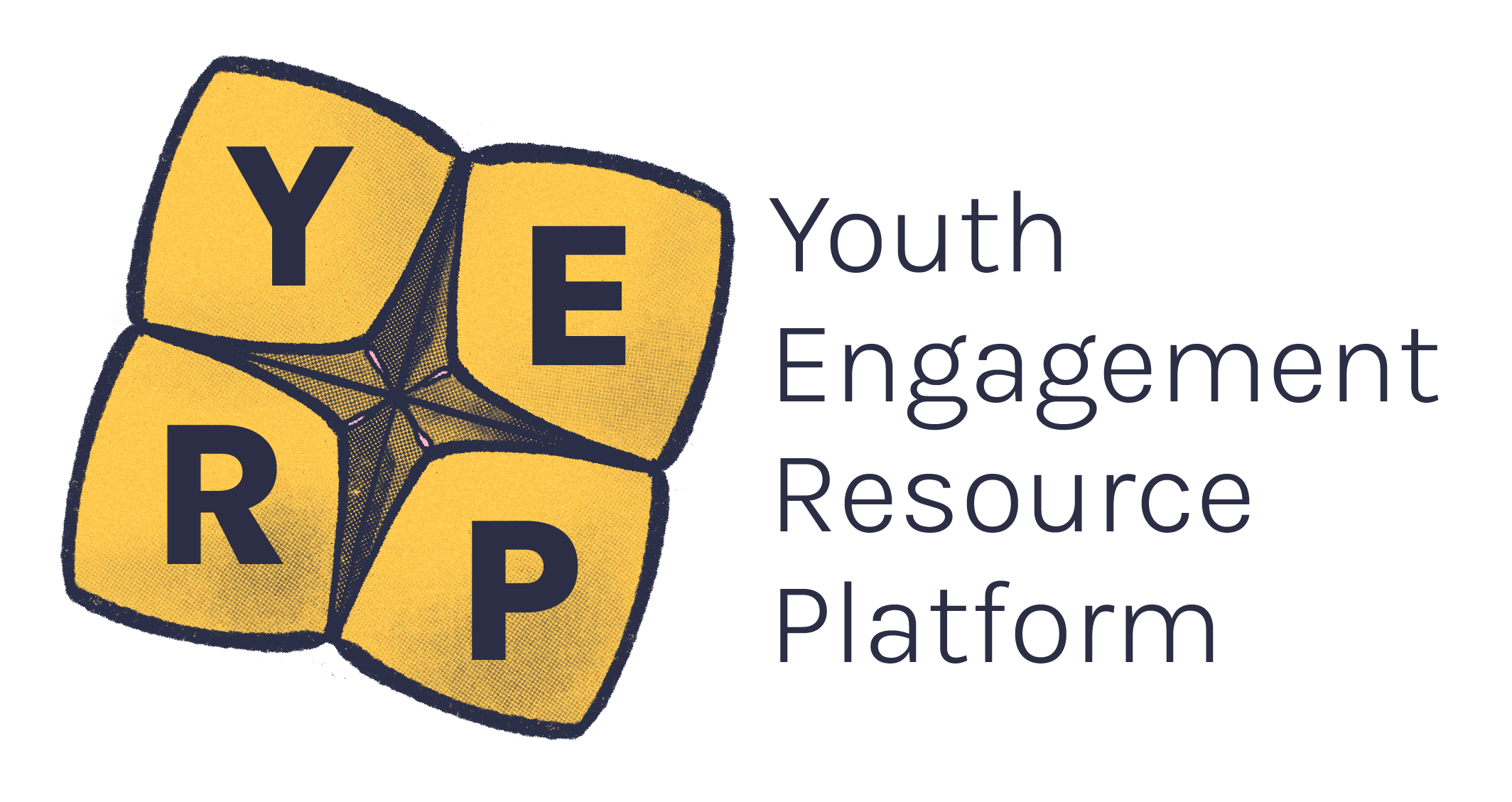Part of your role as a youth worker is to create safe spaces so all young people feel supported to be their whole selves when they engage with you and your service.1 Working towards allyship contributes to your increased self-awareness and working ethically with young people.
This resource is intended as a starting point, and we really encourage you to seek the expertise of organisations dedicated to a particular cohort or issue to develop a deeper understanding of the needs of diverse young people.
At it’s core, allyship is about standing beside, uplifting and supporting marginalised groups, communities and voices you’re not part of.
- Allyship is a practice.2 It’s a continual process of learning and taking real actions.
- It goes beyond educating yourself, and involves identifying ways that injustices show up as you move through the day at work, in education settings, and in the systems you interact with.
- It’s about ‘sitting in the uncomfortable’ and understanding the ways you're complicit in maintaining these systems, and therefore in what ways can you disrupt them. Allyship is about doing the work, and not waiting for someone else to.3,4
- It involves challenging social injustices, working towards equity and moving through the world with empathy and compassion.
- It’s about understanding when to step in vs when to step back and respect boundaries.
- Allyship is about supporting communities to be empowered in their leadership, their work and activism, while also taking an active role in self-education and not placing the burden of education on marginalised communities and/or individuals.3,4,5
Five people sitting on a log in the bush. Text on image reads '"I am an Ally"' crossed out. Underneath text treats '"I am striving towards Allyship" weenthunga.com.au
Image provided by Weenthunga
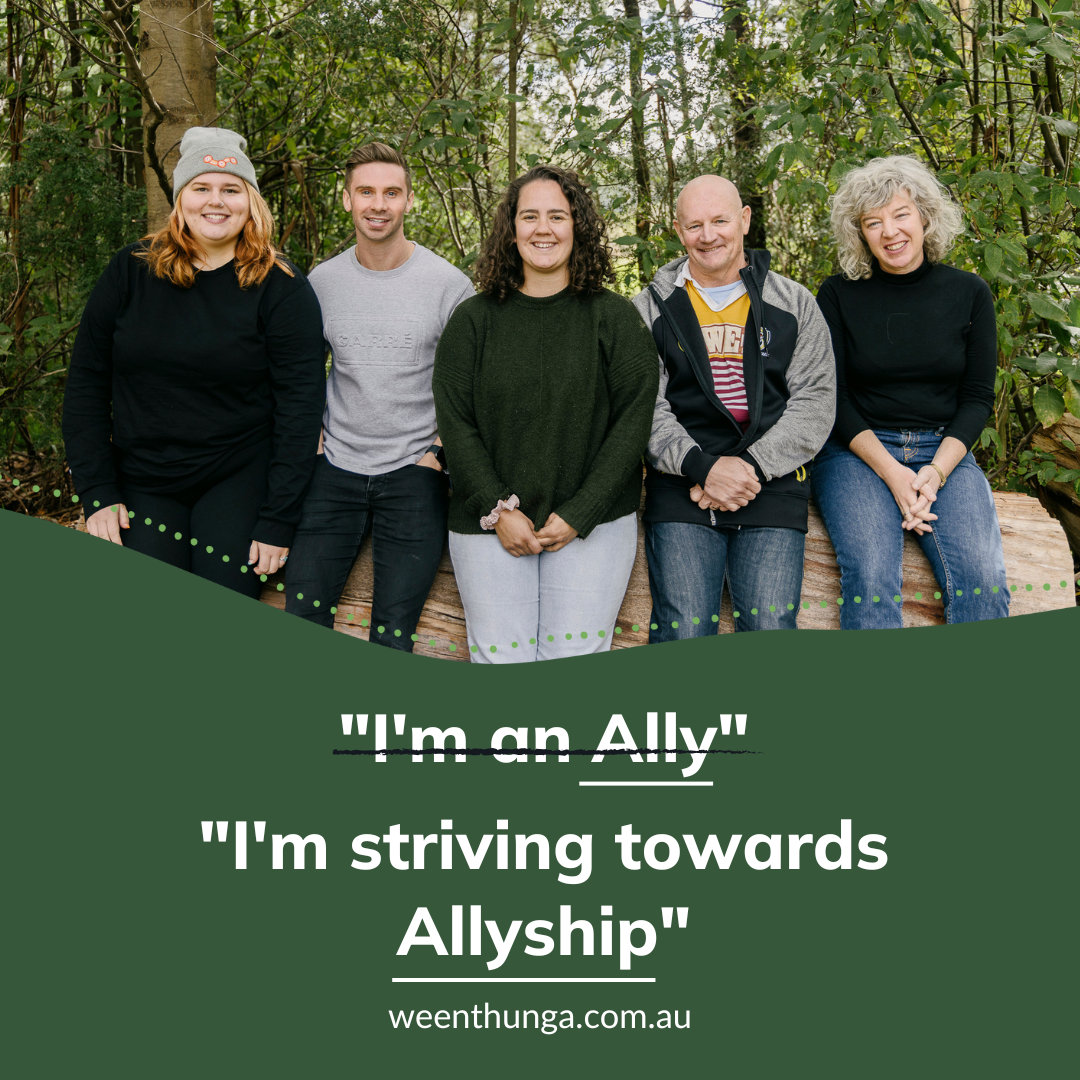
- Allyship is not an identity.2
- It’s not something you achieve as a once off, ‘tick box’.
- It’s not about centring ourselves and ‘all the good work we're doing’.
- It 's not something you do for recognition or praise.
- Try not to think of allyship in terms of ‘being an ally’. You can’t self-identify as an ally but can strive towards allyship. You won’t reach an ultimate state of ‘being an ally’, it’s an ongoing process of forever learning where you will constantly evolve and improve.3
Having privilege means that you have an unearned advantage in society through some aspect of your identity. As a youth worker be aware of your privileges, the potential power imbalances when working with young people and how these two can intersect.6
For example, if you’re a white person, you have the unfair advantages and benefits that white people receive in society simply because of their skin colour.white privilege that a person of colour doesn’t have. If you’re able-bodied, you have the unearned advantages that able-bodied people experience that disabled people don't.able-bodied privilege that a disabled person doesn’t have.
Even though it’s uncomfortable, acknowledging you privilege means you can better enact allyship because you can understand how the world works; often to the disadvantage of marginalised groups, and you can start to challenge it.6
Educate yourself! It’s that simple. Education is power and it’s how you can start to understand the world and the experiences of others. Interact with resources, books, podcasts, interviews and documentaries by researchers, leaders and activists from marginalised communities.4
Don’t rely on the young people you work with and especially don’t expect it for free. Marginalised communities and individuals often carry an invisible workload that falls on people of different backgrounds and cultures, to educate people on issues affecting them.4
Part of allyship is avoiding tokenism.
Tokenism involves doing something (often the bare minimum) to tick a box and avoid criticism, rather than doing something more meaningful.
Young people often face tokenism when engaging with workplaces, services or programs.
A good place to start when ensuring your organisation’s practices aren’t tokenistic is reflecting on the following:
- Has a young person only been asked to participate and engage with the topics that relate to their identity, such as Aboriginal and Torres Strait Islander affairs or refugee and migrant affairs?
- Has the young person felt pressured to be a ‘spokesperson’ for their entire community?
- Have you assumed the young person knows everything about their culture or community and can therefore educate you without an effort on your behalf to try and learn?
- Is there an expectation of educating other members of the community?
- Is the young person being asked to share their lived experience without any supports in place?
- Is the young person able to undertake community or cultural obligations with understanding and support?
Tokenising and compartmentalising young people’s experiences exclusively based on their identity leads to stress, anxiety and burnout and while consultation and transparency are important, it shouldn’t create an additional burden on them.
A speech bubble with words that read: It’s okay to ask questions, but try to begin by saying ‘if you don’t have space to answer this right now that is totally fine'.
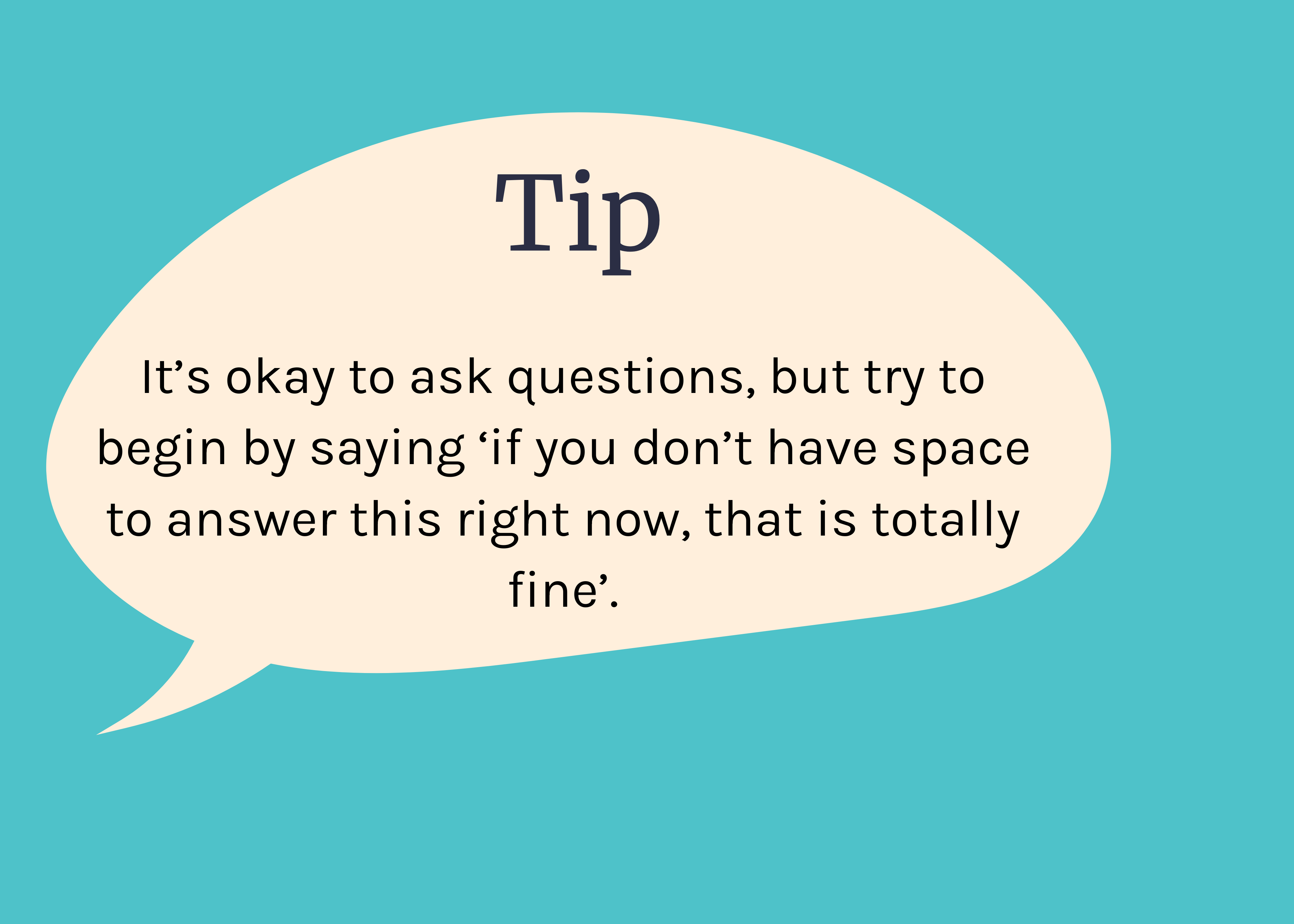
Microaggressions can be verbal or non-verbal, overt or more subtle and include insensitive statements, questions, actions or assumptions towards people of a marginalised group.7
Microaggressions can happen everywhere, and we may not even realise it’s a microaggression. They can have negative impacts on someone’s mental health, especially as they’re often not experienced in isolation but as part of a long pattern of interactions.7
For the person experiencing the microaggressions, it can be challenging and exhausting to speak about it. That’s why it’s important to challenge this behaviour by either ‘calling in’ or ‘calling out’ the person.
Here are some common examples of everyday microaggressions, adapted from the National Education Association’s examples of microaggressions.
Heading reads: Examples of Microaggressions.
Theme 1: When people of colour are assumed to be from a different country
Microaggression: "where are you from?", “where were you born?”, “your English is really good.”
Message: You aren't from this country
Theme 2: A person of colour is presumed to be dangerous, criminal, or deviant on the basis of their race.
Microaggression: A store owner following a customer of colour around the store. A white person waits to ride the next elevator when a person of colour is on it.
Message: You are a criminal. You are going to steal / you are poor / you do not belong / you are dangerous.
Theme 3: When a person’s way of life is questioned or presumed wrong.
Microaggression: A parent moving their child away from a same sex couple holding hands.
Message: Your relationship is wrong.
Theme 4: Ableist language and prejudice towards disabled people’s abilities.
Microaggression: Telling someone “You’re so brave” just for existing in the same space as you.
Message: You don’t really belong here.
Theme 5: Use of heterosexist or transphobic terminology
Microaggression: Saying “That’s so gay”
Message: Being gay is abnormal and wrong.
Download the accessible version
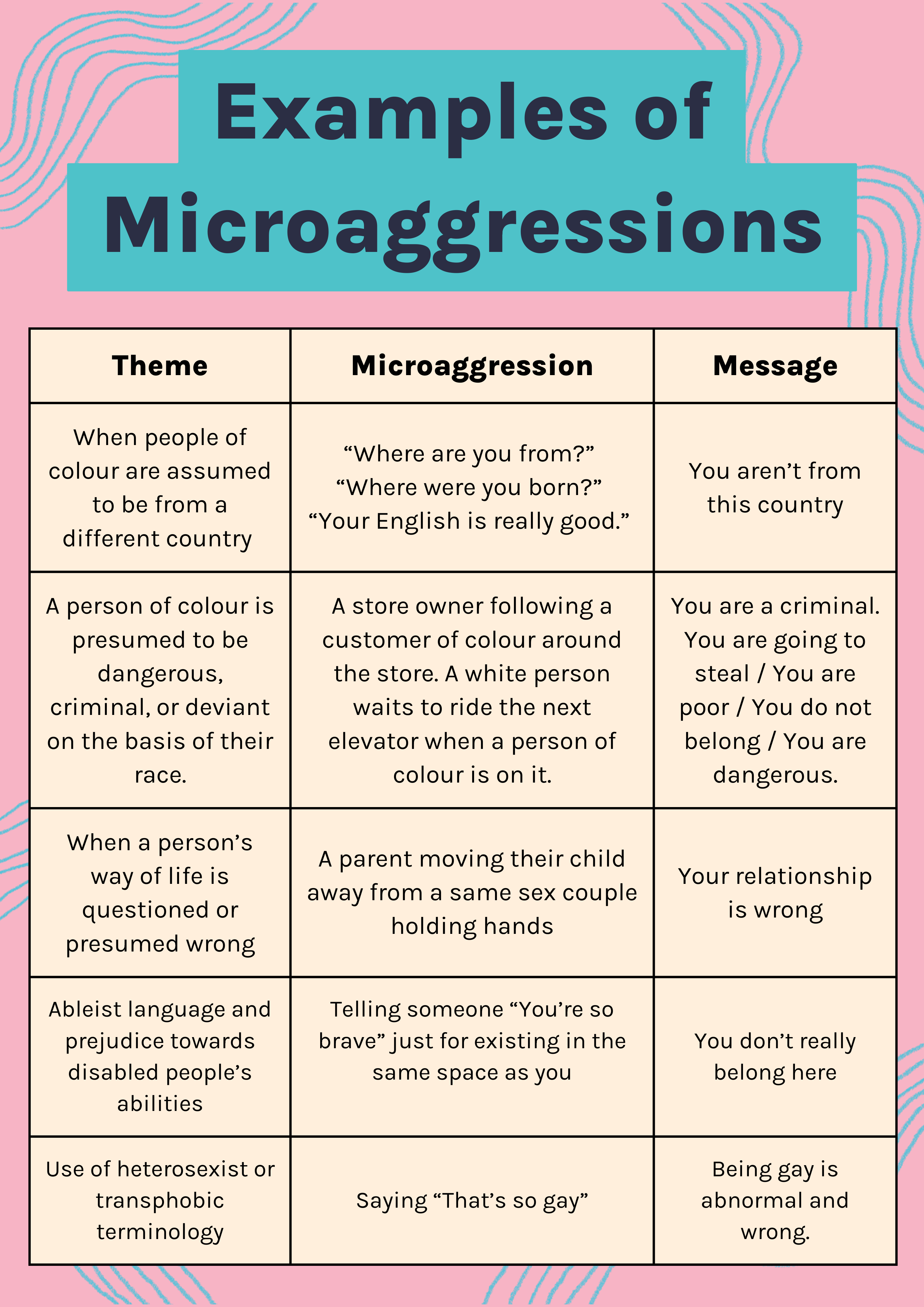
Allyship is about challenging hurtful and harmful behaviour when you witness it. You should only do this when it’s safe to do so, and it can be done in one of two ways: ‘calling in’ or ‘calling out’ behaviour.
Calling in challenging behaviour involves inviting an individual or a small group of people to chat about why something that was said was harmful.
During a Youth Advisory Group meeting, a young person makes an ableist slur.
Based on their tone, you believe that their intention was not harmful. Perhaps they're not fully aware of the appropriate language to use.
Because of this, you might decide it's best to speak with them privately rather than calling them out in front of the group.
- Remind everyone in the meeting of the values or any group agreements you might have made together when first establishing the Advisory Group.
- After the meeting, privately address the comment that the young person made.
- Let them know that the Advisory Group is a safe space for everyone, where we accept all people and abilities.
- You could quote their comment back to them and explain why it goes against this value.
- If you feel confident, you could explain why the comment was an ableist slur. Once the conversation is over you might ask them a more general question that builds rapport or walk them out of the venue.
Calling out puts the person who perpetuated the behaviour on the spot. Depending on the severity of the behaviour, calling out may be appropriate where the person should know better (i.e. they're in a position of power/authority), or it might be necessary to ensure the safety of a group/space.
During a Youth Advisory Group meeting, a young person makes a racist comment. Before the conversation can continue, you jump in and ask the group to pause the conversation to address the young person's comment.
You tell the young person that the Advisory Group is a safe space for everyone, where we accept all people, and what they just said goes against this value.
- Refer to the values or any group agreements that were made together when first establishing the Advisory Group.
- Explain to the young person that being part of the group means they don’t make comments like the one they just did.
- Explain why the comment was racist. You should check in with the group and ask if they’re happy to continue with the meeting, or whether they need a 5 minute break.
Reminder- you should only ‘call in’ or ‘call out’ behaviour if it’s safe to do so. Your safety is a priority, and you shouldn’t put yourself in unsafe situations for any reason.
As a youth worker, you may also experience young people coming to you for advice if they have witnessed harmful behaviour and weren’t sure on what to do.
If this occurs:
- Let the young person know that it’s okay that they didn’t call the behaviour out at the time – their safety is a priority.
- Speak to them about the incident and why they found it harmful.
- Give them strategies about how they can ‘call in' or ‘call out’ the person next time.
The term bystander often comes up when talking about ‘calling in’ and ‘calling out’ behaviour. A bystander is a person who is present at an event or incident but does not take part.8 For example, you might see a person being bullied but you aren’t sure what to do so you don’t offer help.
Here are some additional resources about being a bystander and staying safe while taking part in allyship:
Be A Positive Bystander - Rise Above the Pack
Allyship can take many forms and the following list can get you thinking on some ways you can enact allyship with the young people you work with. It’s not exhaustive and doesn’t speak to allyship for every marginalised community.
We encourage you to research specific cohorts and organisations if you need more information, training and resources.
Allyship may look like:
- Supporting self-determination and developing culturally safe practice.
- Listening to and learning from Indigenous knowledge systems and practices.
- Educating yourself on the histories and modern-day contexts of Aboriginal and Torres Strait Islander people.
- Encouraging your organisation to develop a Reconciliation Action Plan (RAP).
- Taking part in self-reflection and ongoing training in areas of anti-oppression, deconstructing whiteness, anti-racism and allyship, inclusion and unconscious bias.
- Ensuring access needs are part of normal practice, not an afterthought
- Not putting the burden of solving access requirement issues on the young person. Instead, working with them, asking them what they need, and what has worked for them in the past.
- Reflecting on your own microaggressions and unconscious biases.
- Sharing your own pronouns and using other people’s pronouns correctly. If you mis-gender someone accidently, correct yourself, apologise and move on.
- Advocating for gender neutral bathrooms even if you don’t use them yourself.
- Using your privilege and access to decision-makers to ask questions about when and how marginalised young people have been included and/or represented in processes (this is especially important in spaces where it's obvious young people aren't present).
- Understanding the contemporary social contexts of individuals or a group of young people you’re working with. For example, knowing days of significance for them, international events and celebrations.9
- Being accountable and acknowledging when an environment isn’t safe for a young person. Don’t rely on the young person to say something.
As you would have read, part of allyship is advocacy, and we encourage you to check out Human Rights Law Centre’s advocacy guides on Victoria's Human Rights Charter.
Illustration by Rin Naylor-degraaf
Four people wearing colourful clothes. The two people at the front are bigger and the person on the left is holding up small paper cut-outs of people. They have dark skin and one has blonde hair and the other has dark hair. The people at the back are smaller, the one on the left has no hair and the one on the right has purple hair.
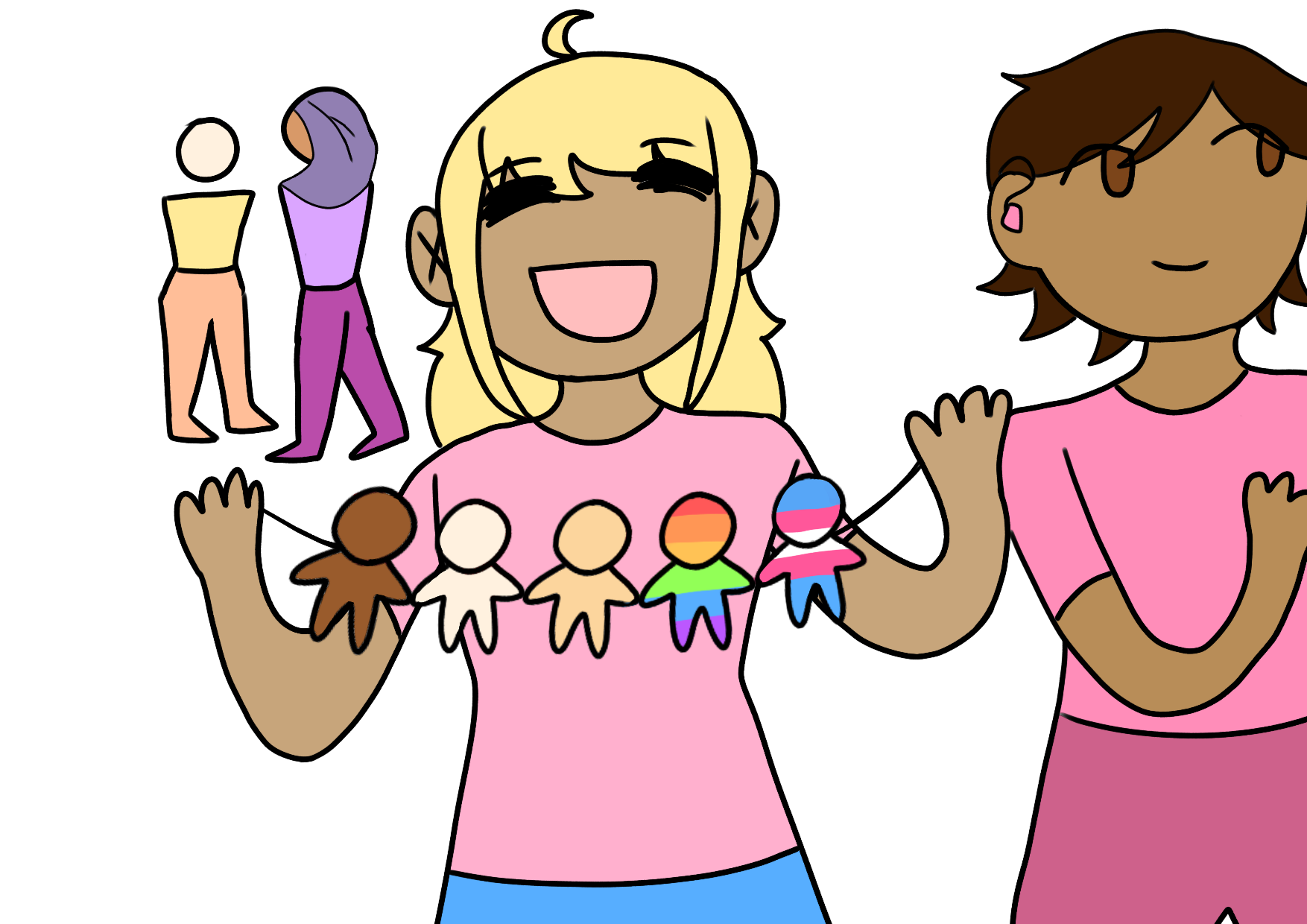
- Amnesty International. (n.d). Allyship Resources. https://www.amnesty.org.au/allyship-resources/
- Weenthunga [@weenthunga]. (viewed on 8 January 2025). "I'm striving towards allyship" carousel, slide 2. Instagram. https://instagram.com/p/CuoXAaSPUDB
- Kottler, E. J., Shanebeck, K. M., & Collinge, S. K. (2023). Allyship requires action. Frontiers in Ecology & the Environment, 21(4), 163. https://doi.org/10.1002/fee.2631
- Saad, L. (2020). Me and White Supremacy: Combat Racism, Change the World, and Become a Good Ancestor.
- Williams, K. S., Weigand, H., Okoroafor, S., Liuzzo, G., & Ganuelas Weigand, E. (2023). Kindness-informed allyship praxis. Equality, Diversity and Inclusion: An International Journal, 42(9), 1–15. https://doi.org/10.1108/EDI-06-2021-0145
- Australian Human Rights Commission. (n.d). Being an ally. Racism. It stops with me. https://itstopswithme.humanrights.gov.au/take-action/being-an-ally
- Youth Disability Advocacy Service. (2023). What are some barriers to disability pride? https://www.yacvic.org.au/ydas/resources-and-training/pride-guide-employers/barriers-pride/
- Anti-Bullying Alliance. (n.d). Bystanders. https://anti-bullyingalliance.org.uk/tools-information/all-about-bullying/whole-school-and-setting-approach/peer-support-strategies-0
- Koorie Youth Council. (2020). Wayipunga. https://koorieyouthcouncil.org.au/wayipunga/
Related Topics
Disclaimer: For the purposes of YERP and based off feedback from our co-designers, we use ‘Cultural Safety’ as a broad definition to include young people from all diverse backgrounds, not just focusing on Aboriginal and Torres Strait Islander young people. For more information, please see our ‘explainer’ for the diversity and inclusion topic for youth sector workers.

